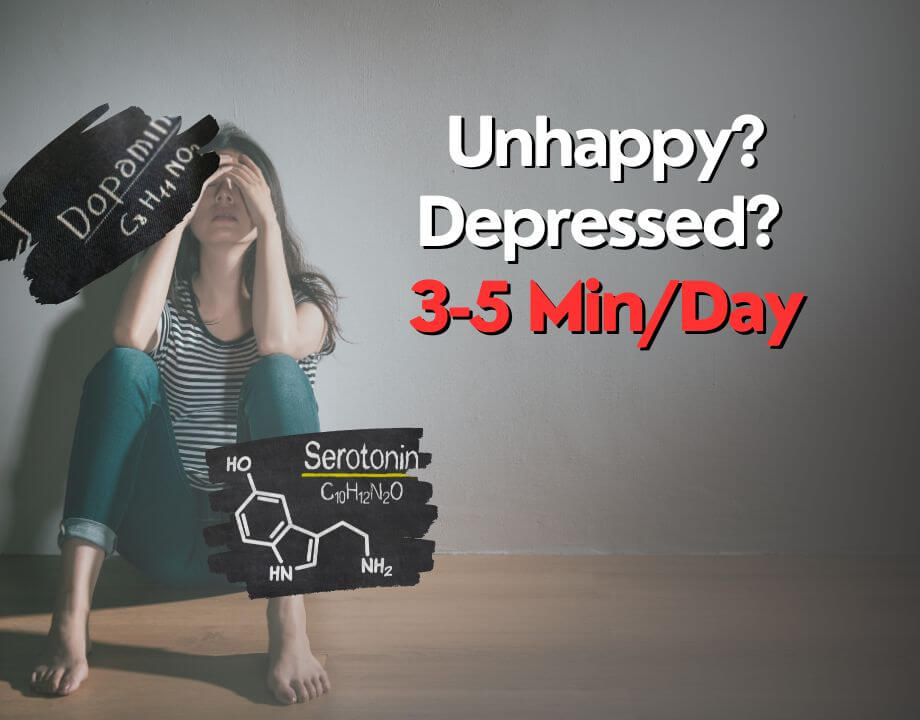We all experience moments of unhappiness and difficult periods in our lives. However, when these episodes occur too frequently, they can have a significant impact on our relationships, work, and overall lifestyle.
Depression is a fairly complex condition with multiple contributing factors, including genetics, environmental stressors, and cognitive factors. There is a variety of symptoms and their intensity, but common symptoms can be:
Persistent sadness or a low mood. Losing interest in activities that were once enjoyable, including hobbies, social interactions, and work. Changes in appetite or weight, Insomnia. Fatigue, Feeling tired or lacking energy, even after a good night's sleep. Difficulty concentrating, making decisions, or remembering things & some Physical symptoms such as Headaches, digestive problems, and other unexplained aches and pains.
After reviewing numerous papers and studies, it becomes clear that science has not definitively identified the precise cause and origin of depression and mood disorders. However, what is currently widely accepted is the monoamine hypothesis.
The monoamine hypothesis is a well-known theory that suggests that depression is related to a deficiency of certain neurotransmitters, particularly serotonin, norepinephrine, and dopamine. According to this hypothesis, low levels of these neurotransmitters can result in altered mood regulation and contribute to depressive symptoms.
That is why the antidepressant medications that are often prescribed, address the neurotransmitter imbalance in depression. These medications work in various ways, such as by increasing the availability of serotonin and norepinephrine in the brain. For example, (SSRIs) selective serotonin reuptake inhibitors prevent the re-absorption of serotonin, leaving more of it available in the brain to improve mood.
It is crucial to emphasize that if you are taking any of these medications, you should never discontinue them without consulting your doctor. Many of these medications should not be abruptly discontinued due to their potential for severe withdrawal effects. Additionally, if you are experiencing intensive or clinical depression, it is imperative to seek the guidance of a healthcare professional before taking any other steps.
Now let’s look at the 3 neurotransmitters that play roles in depression:
First Serotonin which is often referred to as the "feel-good" neurotransmitter. It plays a crucial role in regulating mood, emotions, and sleep. Low levels of serotonin are linked to feelings of sadness, anxiety, and irritability, which are common in depression.
Norepinephrine is involved in the body's "fight or flight" response to stress. An imbalance in norepinephrine levels can lead to symptoms like increased stress, restlessness, and agitation, all of which are associated with depression.
Finally, Dopamine is associated with pleasure and reward. Changes in dopamine levels can affect motivation and the ability to experience pleasure, making it a factor in anhedonia, which is loss of interest or pleasure often seen in depression and addiction.
In my previous blogs, I delved into the topic of how ice bath or cold showers can stimulate the production of these neurotransmitters. In brief, the water should be sufficiently cold to give you an initial shock, tempting you to jump out of the ice bath immediately, but then you should strive to endure it for a minute or two. As you acclimate to the ice bath, gradually extend the duration. If you're interested in progressing further with cold therapy, you can consider transitioning from cold showers to an ice bath or cold plunge. Personally, I've found full immersion in an ice bath to be not only more effective but also more enjoyable.
In addition to raising the level of these neurotransmitters, ice bath benefits the body by reducing Inflammation in the body. Chronic inflammation is believed to be linked to various mood disorders, including depression.
Also Stress Reduction. Exposure to cold can activate the body's stress response, leading to the release of stress hormones like cortisol for a very short period. While this might seem counterproductive, controlled exposure to stressors (also known as hormesis) can help the body adapt to stress over time, potentially leading to improved stress resilience and mood regulation.
Improved Sleep: An ice bath session, in the evening, can promote better sleep. Quality sleep is crucial for maintaining a stable mood which is another benefit of ice bath.
If you do ice bath in the evening, to feel relaxed and ready for sleep, finish with a warm, not too hot, shower. You want your core temperature to stay cool but leave with a nice & relaxed feeling. However, if you're doing cold plunge in the morning for an energy boost, you can finish with cold water, dry off, and get going.
When it comes to addressing depression, I suggest turning the process into a regular and enjoyable ritual, something you turn to when you're not feeling your best. Combining cold plunge with a sauna or a hot bath is an excellent idea. This combination can make the entire experience more invigorating and divert your attention away from the day-to-day issues that often feel magnified with depressive disorders.
Regardless of when scientists manage to reach a consensus and confirm the causes and origins of depression, there's one thing for certain – ice bath feels fantastic & the benefits of ice bath are numerous! There are times when I return from work, feeling rather fatigued with low energy and mood. However, a quick dip in my ice bath, and I'm revitalized and ready to face the world once more!
Anyway, unless you give it a shot for a few weeks and allow it the time to work its magic, you won't truly understand ice bath benefits and potential!
© Copyright. All rights reserved. Dubai, Abu Dhabi - UAE





